The binomial distribution
Introduction to Statistics in R

Maggie Matsui
Content Developer, DataCamp
Coin flipping
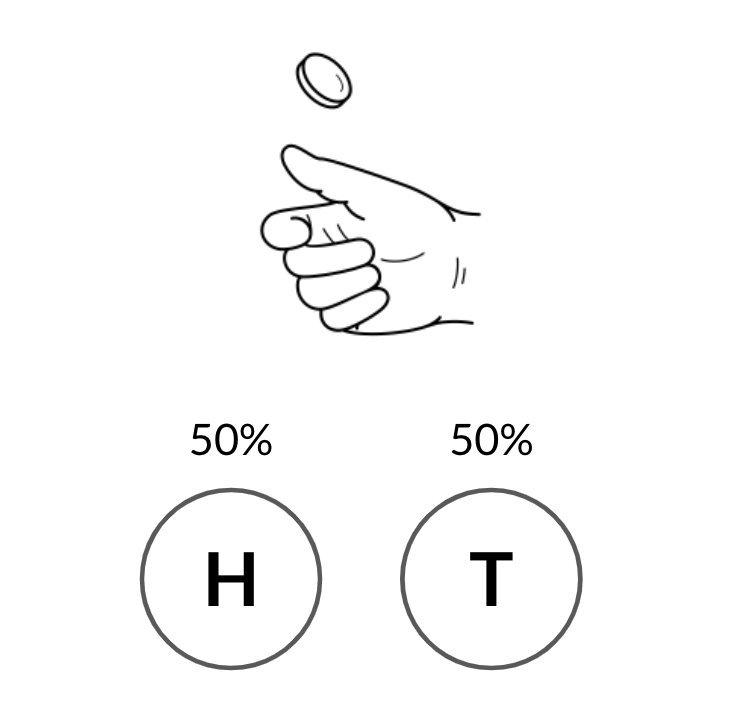
Binary outcomes

A single flip
rbinom(# of trials, # of coins, # probability of heads/success)
1 = head, 0 = tails
rbinom(1, 1, 0.5)
1
rbinom(1, 1, 0.5)
0
One flip many times
rbinom(8, 1, 0.5)
1 0 0 1 0 0 1 0

Many flips one time
rbinom(1, 8, 0.5)
3
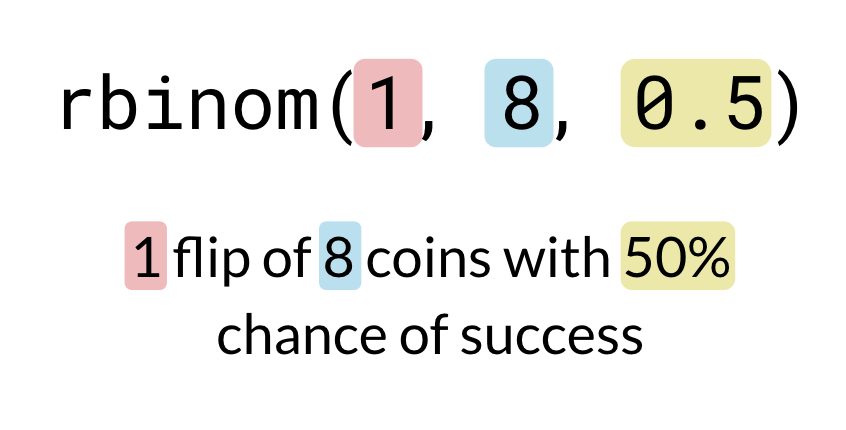
Many flips many times
rbinom(10, 3, 0.5)
2 0 1 0 1 1 3 3 3 1
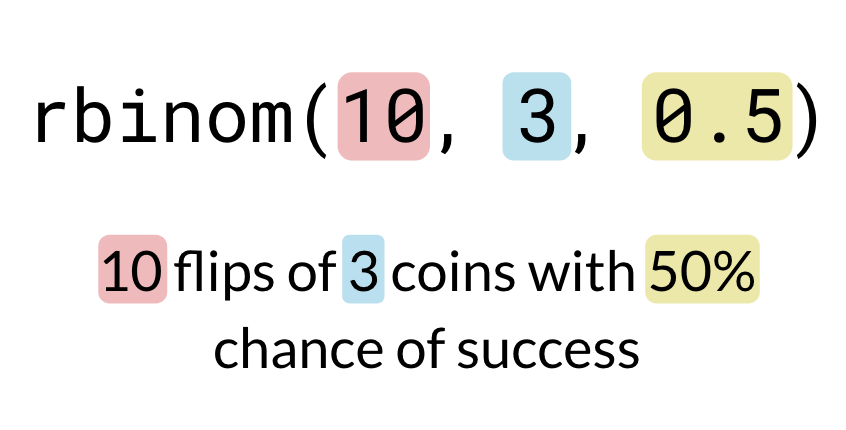
Other probabilities
rbinom(10, 3, 0.25)
1 1 0 0 1 1 1 1 2 1
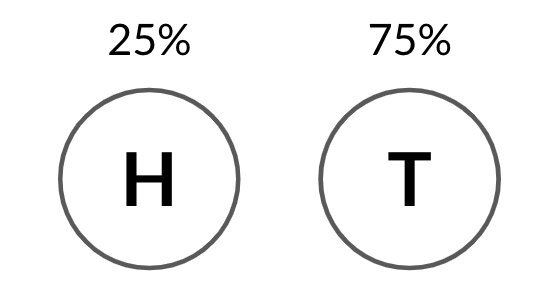
Binomial distribution
Probability distribution of the number of successes in a sequence of independent trials
E.g. Number of heads in a sequence of coin flips
Described by $n$ and $p$
- $n$: total number of trials
- $p$: probability of success
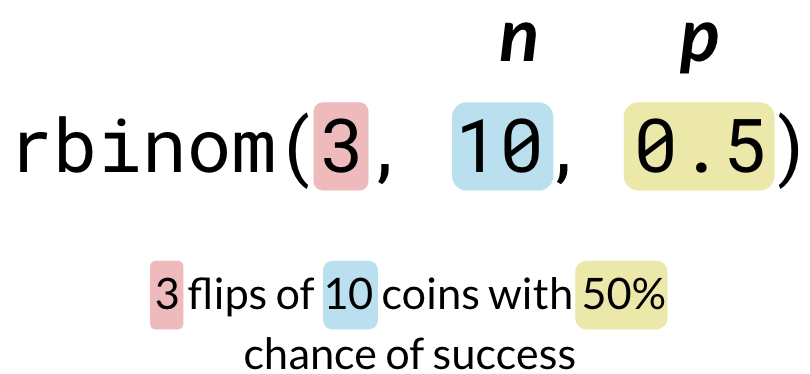
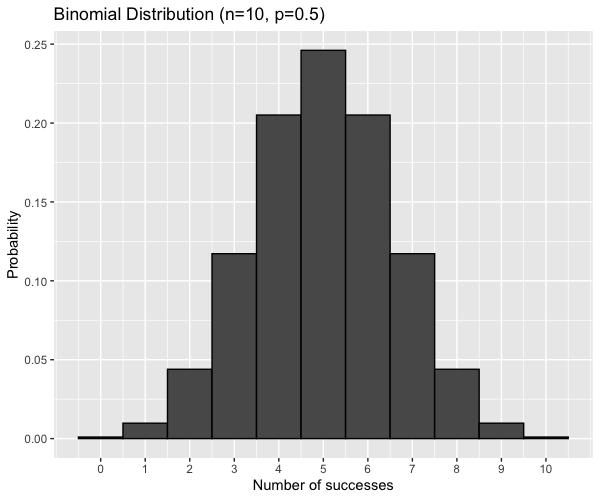
What's the probability of 7 heads?
$P(\text{heads} = 7)$
# dbinom(num heads, num trials, prob of heads)
dbinom(7, 10, 0.5)
0.1171875
What's the probability of 7 or fewer heads?
$P(\text{heads} \le 7)$
pbinom(7, 10, 0.5)
0.9453125
What's the probability of more than 7 heads?
$P(\text{heads} > 7)$
pbinom(7, 10, 0.5, lower.tail = FALSE)
0.0546875
1 - pbinom(7, 10, 0.5)
0.0546875
Expected value
$\text{Expected value} = n \times p$
Expected number of heads out of 10 flips $= 10 \times 0.5 = 5$
Independence
The binomial distribution is a probability distribution of the number of successes in a sequence of independent trials
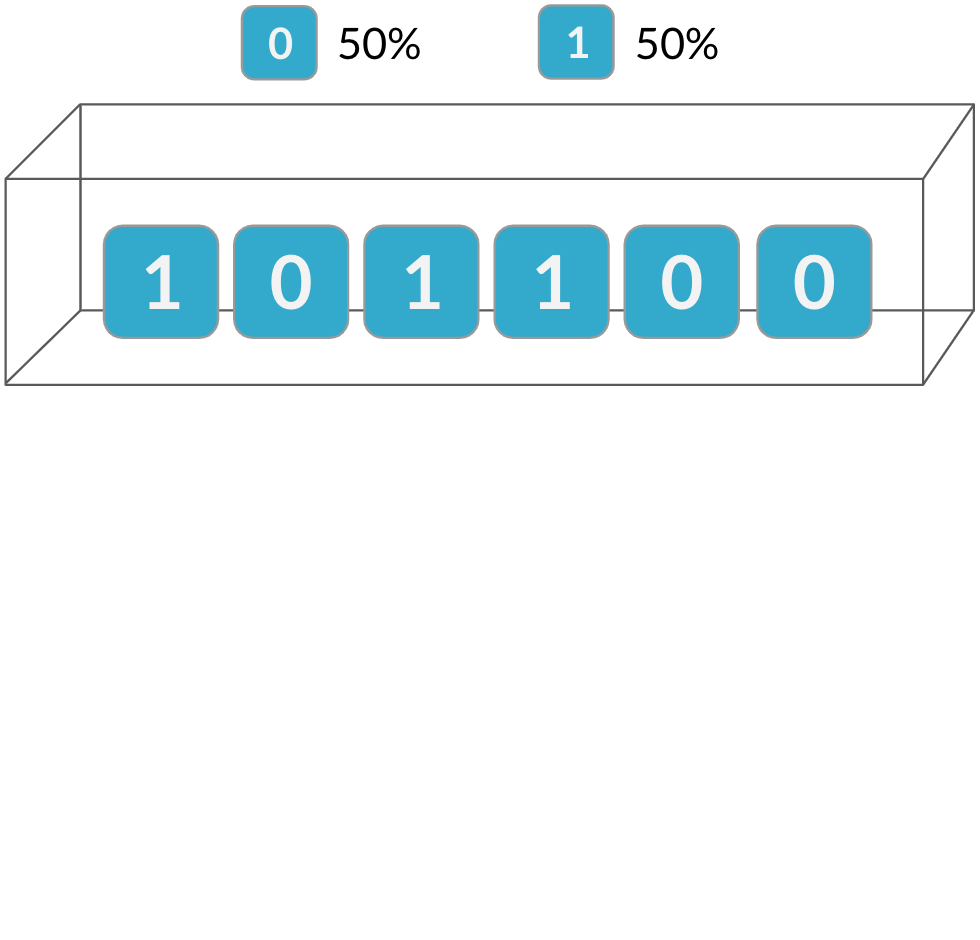
Independence
The binomial distribution is a probability distribution of the number of successes in a sequence of independent trials
Probabilities of second trial are altered due to outcome of the first
If trials are not independent, the binomial distribution does not apply!
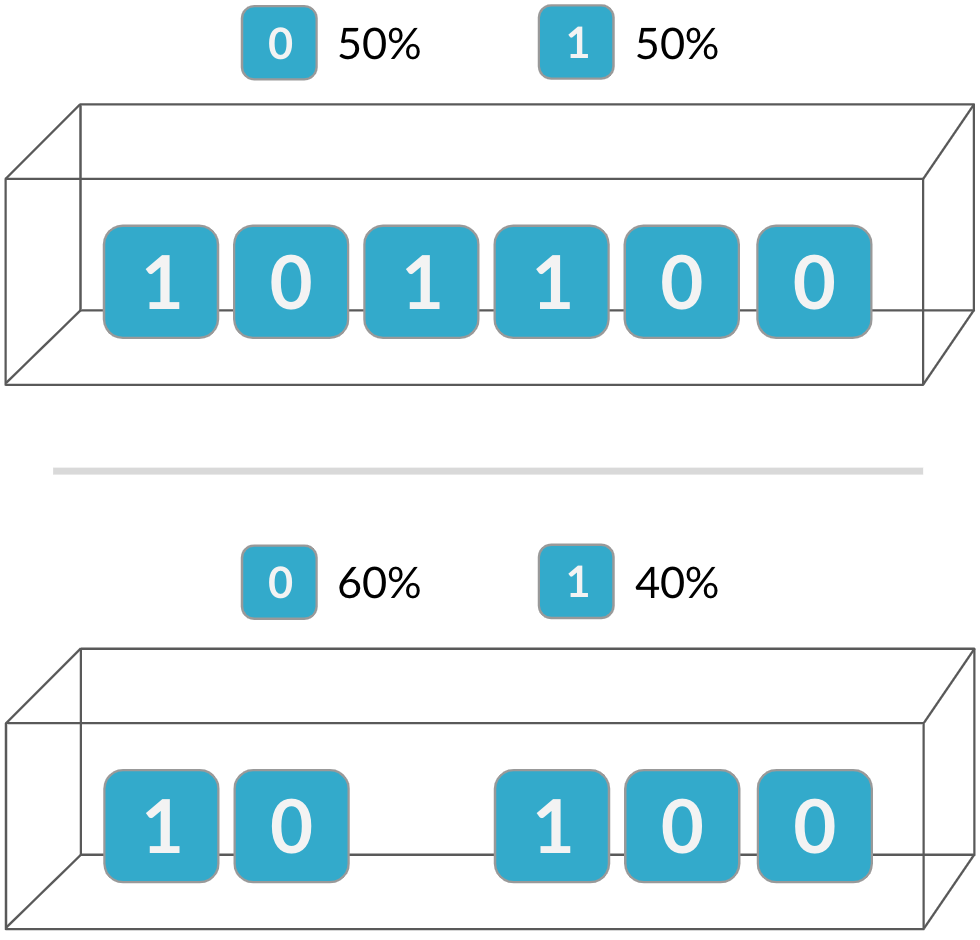
Let's practice!
Introduction to Statistics in R

